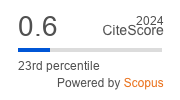Mediators and signaling pathways in myocardial fibrosis
https://doi.org/10.29001/2073-8552-2025-40-3-19-27
Abstract
Myocardial fibrosis is closely associated with severe cardiovascular diseases, characterized by increased mortality rates worldwide. The development of myocardial fibrosis is based on the differentiation of fibroblasts into myofibroblasts, which synthesize components of the extracellular matrix in excess. A key regulator of fibroblast differentiation into myofibroblasts is transforming growth factor-beta. In recent years, close attention in the pathogenesis of fibrosis has been given to other growth factors – neurotrophins. It was recently discovered that fibroblasts express brain-derived neurotrophic factor (BDNF), and its receptors are involved in the pathogenesis of fibrosis of various organs and tissues. The role of BDNF and its receptors in the pathogenesis of myocardial fibrosis is just beginning to be studied. This review summarizes the information available in the literature (2019-2023) on the pathophysiological and pathogenetic mechanisms of the relationship between BDNF and cardiac fibrosis. Data presented in the literature showed that the mechanisms of action of BDNF in the cardiovascular system and the pathogenesis of cardiac fibrosis have common points of intersection, which makes this neurotrophin a promising therapeutic target for cardiac fibrosis. Further investigation of these aspects will allow the use of various external effects of BDNF to develop technology for the prevention of cardiac fibrosis.
Keywords
About the Authors
O. Yu. KytikovaRussian Federation
Oxana Yu. Kytikova - Dr. Sci. (Med.), Senior Research Scientist, Laboratory of Rehabilitative Treatment, Scientific Research Institute of Medical Climatology and Rehabilitation.
73-g, Russkaya str., Vladivostok, 690105
M. V. Antonyuk
Russian Federation
Marina V. Antonyuk - Dr. Sci. (Med.), Professor, Head of the Laboratory of Rehabilitation, Scientific Research Institute of Medical Climatology and Rehabilitation.
73-g, Russkaya str., Vladivostok, 690105
T. P. Novgorodtseva
Russian Federation
Tatyana P. Novgorodtseva - Dr. Sci. (Biol.), Professor, Chief Research Scientist, Laboratory of Biomedical Research, Scientific Research Institute of Medical Climatology and Rehabilitation.
73-g, Russkaya str., Vladivostok, 690105
T. A. Gvozdenko
Russian Federation
Tatyana А. Gvozdenko - Dr. Sci. (Med.), Professor of Russian Academy of Sciences, Chief Research Scientist, Laboratory of Rehabilitation, Institute of Medical Climatology and Rehabilitative.
73-g, Russkaya str., Vladivostok, 690105
References
1. Virani S.S. Heart disease and stroke statistics – 2021 update: A report from the American Heart Association. Circulation. 2021;143(8):254–743. https://doi.org/10.1161/CIR.0000000000000950.
2. Lavie C.J. Progress in Cardiovascular Diseases Statistics 2022. Prog. Cardiovasc. Dis. 2022;73:94–95. https://doi.org/10.1016/j.pcad.2022.08.005.
3. Maruyama K., Imanaka-Yoshida K. The pathogenesis of cardiac fibrosis: A review of recent progress. Int. J. Mol. Sci. 2022;23(5):2617. https://doi.org/10.3390/ijms23052617.
4. Xue K., Chen S., Chai J., Yan W., Zhu X., Dai H. et al. Upregulation of periostin through CREB participates in myocardial infarction – induced myocardial fibrosis. J. Cardiovasc. Pharmacol. 2022;79(5):687–697. https://doi.org/10.1097/FJC.0000000000001244.
5. Liu M., López de Juan Abad B., Cheng K. Cardiac fibrosis: Myofibroblast-mediated pathological regulation and drug delivery strategies. Adv. Drug. Deliv. Rev. 2021;173:504–519. https://doi.org/10.1016/j.addr.2021.03.021.
6. Travers J.G., Tharp C.A., Rubino M., McKinsey T.A. Therapeutic targets for cardiac fibrosis: from old school to next-gen. J. Clin. Invest. 2022;132(5):148554. https://doi.org/10.1172/JCI148554.
7. Zhang T., He X., Caldwell L., Goru S.K. et al. NUAK1 promotes organ fibrosis via YAP and TGF-β/SMAD signaling. Sci. Transl. Med. 2022;14:4028. https://doi.org/10.1126/scitranslmed.aaz4028.
8. Zhang Y., Yuan B., Xu Y., Zhou N., Zhang R., Lu L. et al. MiR-208b/miR-21 promotes the progression of cardiac fibrosis through the activation of the TGF-β1/smad-3 signaling pathway: An in vitro and in vivo study. Front. Cardiovasc. Med. 2022;9:924629. https://doi.org/10.3389/fcvm.2022.924629.
9. Budi E.H., Schaub J.R., Decaris M., Turner S., Derynck R. TGF-β as a driver of fibrosis: Physiological roles and therapeutic opportunities. J. Pathol. 2021;254(4):358–373. https://doi.org/10.1002/path.5680.
10. Surinkaew S. Exchange protein activated by cyclic-adenosine monophosphate (Epac) regulates atrial fibroblast function and controls cardiac remodelling. Cardiovasc. Res. 2019;115(1):94–106. https://doi.org/10.1093/cvr/cvy173.
11. Coleman R.C. A peptide of the N terminus of GRK5 attenuates pressure-overload hypertrophy and heart failure. Sci. Signal. 2021;14(676):5968. https://doi.org/10.1126/scisignal.abb5968.
12. Kamiya M. β3-Adrenergic receptor agonist prevents diastolic dysfunction in an angiotensin II-induced cardiomyopathy mouse model. J. Pharmacol. Exp. Ther. 2021;376(3):473–481. https://doi.org/10.1124/jpet.120.000140.
13. Antar S.A., Ashour N.A., Marawan M.E., Al-Karmalawy A.A. Fibrosis: Types, effects, markers, mechanisms for disease progression, and its relation with oxidative stress, immunity, and inflammation. Int. J. Mol. Sci. 2023;24(4):4004. https://doi.org/10.3390/ijms24044004.
14. AlQudah M., Hale T.M., Czubryt M.P. Targeting the renin-angiotensin-aldosterone system in fibrosis. Matrix Biol. 2020;91–92;92–108. https://doi.org/10.1016/j.matbio.2020.04.005.
15. Yogasundaram M. C., Chappell B. B. Cardiorenal syndrome and heart failure – challenges and opportunities. Can. J. Cardiol. 2019;35(9):1208– 1219. https://doi.org/10.1016/j.cjca.2019.04.002.
16. Zheng X.J., Liu Y., Zhang W.C., Li C., Sun X.N., Zhang Y.Y. et al. Mineralocorticoid receptor negatively regulates angiogenesis through repression of STAT3 activity in endothelial cells. J. Pathol. 2019;248(4):438– 451. https://doi.org/10.1002/path.5269.
17. Frangogiannis N.G. Cardiac fibrosis: cell biological mechanisms, molecular pathways and therapeutic opportunities. Mol. Aspects Med. 2019;65:70–99. https://doi.org/10.1016/j.mam.2018.07.001.
18. Buffolo F., Tetti M., Mulatero P., Monticone S. Aldosterone as a mediator of cardiovascular damage. Hypertension. 2022;79(9):1899–1911. https://doi.org/10.1161/HYPERTENSIONAHA.122.17964.
19. Li C., Meng X., Wang L., Dai X. Mechanism of action of non-coding RNAs and traditional Chinese medicine in myocardial fibrosis: Focus on the TGF-β/Smad signaling pathway. Front. Pharmacol. 2023;14:1092148. https://doi.org/10.3389/fphar.2023.1092148.
20. Hang P.Z., Ge F.Q., Li P.F., Liu J., Zhu H., Zhao J. The regulatory role of the BDNF/TrkB pathway in organ and tissue fibrosis. Histol. Histopathol. 2021;36(11):1133–1143. https://doi.org/10.14670/HH-18-368.
21. Czubryt M.P., Hale T.M. Cardiac fibrosis: Pathobiology and therapeutic targets. Cell. Signal. 2021;85:110066. https://doi.org/10.1016/j.cellsig.2021.110066.
22. Mitra M.S. A potent pan-TGFβ neutralizing monoclonal antibody elicits cardiovascular toxicity in mice and cynomolgus monkeys. Toxicol. Sci. 2020;175(1):24–34. https://doi.org/10.1093/toxsci/kfaa024.
23. Bugg D. Infarct collagen topography regulates fibroblast fate via p38-yes-associated protein transcriptional enhanced associate domain signals. Circ. Res. 2020;127(10):1306–1322. https://doi.org/10.1161/CIRCRESAHA.119.316162.
24. Qin W., Cao L., Massey I.Y. Role of PI3K/Akt signaling pathway in cardiac fibrosis. Mol. Cell. Biochem. 2021;476(11):4045–4059. https://doi.org/10.1007/s11010-021-04219-w.
25. Agrimi J., Spalletti C., Baroni C., Keceli G., Zhu G., Caragnano A. et al. Obese mice exposed to psychosocial stress display cardiac and hippocampal dysfunction associated with local brain-derived neurotrophic factor depletion. EBioMedicine 2019;47:384–401. https://doi.org/10.1016/j.ebiom.2019.08.042.
26. Zhao P., Li X., Li Y., Zhu J., Sun Y., Hong J. Mechanism of miR-365 in regulating BDNF-TrkB signal axis of HFD/STZ induced diabetic nephropathy fibrosis and renal function. Int. Urol. Nephrol. 2021;53: 2177–2187. https://doi.org/10.1007/s11255-021-02853-3.
27. Britt R.D., Thompson M.A., Wicher S.A., Manlove L.J., Roesler A., Fang Y.H. et al. Smooth muscle brain-derived neurotrophic factor contributes to airway hyperreactivity in a mouse model of allergic asthma. FASEB J. 2019;33:3024–3034. https://doi.org/10.1096/fj.201801002R.
28. Xiong J., Liu T., Mi L., Kuang H., Xiong X., Chen Z. et al. HnRNPU/TrkB defines a chromatin accessibility checkpoint for liver injury and nonalcoholic steatohepatitis pathogenesis. Hepatology. 2020;71:1228–1246. https://doi.org/10.1002/hep.30921.
29. Ding H., Chen J., Su M., Lin Z., Zhan H., Yang F. et al. BDNF promotes activation of astrocytes and microglia contributing to neuroinflammation and mechanical allodynia in cyclophosphamide-induced cystitis. J. Neuroinflammation. 2020;17(1):19. https://doi.org/10.1186/s12974020-1704-0.
30. Li L., Fang H., Yu Y.H., Liu S.X., Yang Z.Q. Liquiritigenin attenuates isoprenaline-induced myocardial fibrosis in mice through the TGF-β1/Smad2 and AKT/ERK signaling pathways. Mol. Med. Rep. 2021;24(4):686. https://doi.org/10.3892/mmr.2021.12326.
31. Henderson N.C., Rieder F., Wynn T.A. Fibrosis: From mechanisms to medicines. Nature. 2020;587:555–566. https://doi.org/10.1038/s41586020-2938-9.
32. López B., Ravassa S., Moreno M.U., José G.S., Beaumont J., González A., Díez J. Diffuse myocardial fibrosis: mechanisms, diagnosis and therapeutic approaches. Nat. Rev. Cardiol. 2021;18(7):479–498. https://doi.org/10.1038/s41569-020-00504-1.
33. Ravassa S., González A., Bayés-Genís A., Lupón J., Díez J. Myocardial interstitial fibrosis in the era of precision medicine. Biomarker-based phenotyping for a personalized treatment. Rev. Esp. Cardiol. (Engl. Ed.). 2020;73(3):248–254. https://doi.org/10.1016/j.rec.2019.09.010.
34. Lafuse W.P., Wozniak D.J., Rajaram M.V.S. Role of cardiac macrophages on cardiac inflammation, fibrosis and tissue repair. Cells. 2020;10(1):51. https://doi.org/10.3390/cells10010051.
35. Zhong C., Min K., Zhao Z., Zhang C., Gao E. et al. MAP kinase phosphatase-5 deficiency protects against pressure overload-induced cardiac fibrosis. Front. Immunol. 2021;12:790511. https://doi.org/10.3389/fimmu.2021.790511.
36. Tallquist M.D. Cardiac fibroblast diversity. Annu. Rev. Physiol. 2020;82: 63–78. https://doi.org/10.1146/annurev-physiol-021119-034527.
37. Coeyman S.J., Richardson W.J., Bradshaw A.D. Mechanics & Matrix: Positive feedback loops between fibroblasts and ECM drive interstitial cardiac fibrosis. Curr. Opin. Physiol. 2022;28:100560. https://doi.org/10.1016/j.cophys.2022.100560.
38. Singh R., Kaundal R.K., Zhao B., Bouchareb R., Lebeche D. Resistin induces cardiac fibroblast-myofibroblast differentiation through JAK/sTAT3 and JNK / c-Jun signaling. Pharmacol. Res. 2021;167:105414. 1/Smad signaling pathway. Minerva Med. 2021;112(3):411–412. https://doi.org/10.23736/s0026-4806.19.06201-3.
39. Waszczykowska A., Podgórski M., Waszczykowski M., Gerlicz-Kowalczuk Z., Jurowski P. Matrix metalloproteinases MMP-2 and MMP9, their inhibitors TIMP-1 and TIMP-2, vascular endothelial growth factor and sVEGFR-2 as predictive markers of ischemic retinopathy in patients with systemic sclerosis – Case series report. Int. J. Mol. Sci. 2020;21:8703. https://doi.org/10.3390/ijms21228703.
40. Derynck R., Budi E.H. Specificity, versatility and control of TGF-β family signaling. Sci. Signal. 2019;12(570):eaav5183. https://doi.org/10.1126/scisignal.aav5183.
41. Methatham T., Tomida S., Kimura N., Imai Y., Aizawa K. Inhibition of the canonical WNT signaling pathway by a β-catenin/CBP inhibitor prevents heart failure by ameliorating cardiac hypertrophy and fibrosis. Sci. Rep. 2021;11(1):14886. https://doi.org/10.1038/s41598-021-94169-6.
42. Kang G.J., Kim E.J., Lee C.H. Therapeutic effects of specialized pro-resolving lipids mediators on cardiac fibrosis via NRF2 activation. Antioxidants (Basel). 2020;9(12):1259. https://doi.org/10.3390/antiox9121259.
43. Reddy Y.N.V., Sundaram V. Spironolactone, fibrosis and heart failure with preserved ejection fraction. Eur. J. Heart Fail. 2022;24(9):1569– 1572. https://doi.org/10.1002/ejhf.2626.
44. Kjeldsen S.E., von Lueder T.G., Smiseth O.A., Wachtell K., Mistry N., Westheim A.S. et al. Medical therapies for heart failure with preserved ejection fraction. Hypertension. 2020;75(1):23–32. https://doi.org/10.1161/HYPERTENSIONAHA.119.14057.
45. Vashi R., Patel B.M. NRF2 in Cardiovascular Diseases: a Ray of Hope! J. Cardiovasc. Transl. Res. 2021;14(3):573–586. https://doi.org/10.1007/s12265-020-10083-8.
46. Malik S.C., Sozmen E.G., Baeza-Raja B., Le Moan N., Akassoglou K., Schachtrup C. In vivo functions of p75NTR: challenges and opportunities for an emerging therapeutic target. Trends Pharmacol. Sci. 2021;42(9):772–788. https://doi.org/10.1016/j.tips.2021.06.006.
47. Zang X., Zhao J., Lu C. PM2.5 inducing myocardial fibrosis mediated by Ang II/ERK1/2/TGF-β1 signaling pathway in mice model. J. Renin. Angiotensin. Aldosterone Syst. 2021;22(1):14703203211003786. https://doi.org/10.1177/14703203211003786.
Review
For citations:
Kytikova O.Yu., Antonyuk M.V., Novgorodtseva T.P., Gvozdenko T.A. Mediators and signaling pathways in myocardial fibrosis. Siberian Journal of Clinical and Experimental Medicine. 2025;40(3):19-27. (In Russ.) https://doi.org/10.29001/2073-8552-2025-40-3-19-27





.png)





























